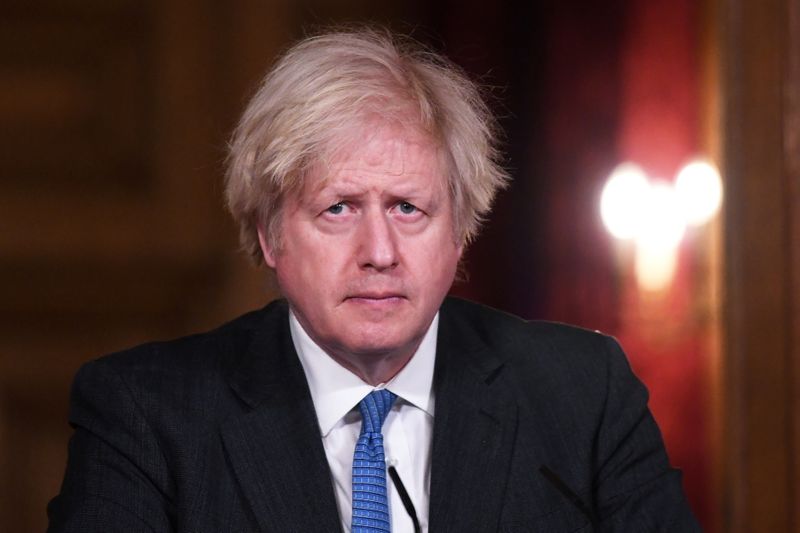By Samuel Indyk
Investing.com – “From this evening I must give the British people a very simple instruction: you must stay at home.” It has been exactly one year since the UK Prime Minister Boris Johnson uttered those words so what has happened to UK assets since the UK entered its first national lockdown.
Stock markets
The FTSE 100 has had a stellar 12 months, rising 23% since the lockdown measures were announced. However, when you compare that to its peers, the FTSE 100 has actually underperformed. Germany’s DAX has risen 50% in the same time period, while France’s CAC is up 40%.
Compared to the US markets the performance is even worse. The Dow has risen 58%, the S&P 500 has risen 61% and the NASDAQ is up 80%. However, those gains are miniscule compared to the Russell 2000 which has more than doubled over the last 12 months.
Individual shares
Despite the hiatus on global sporting events for months in 2020, gambling stocks have outperformed in the UK. Entain PLC (LON:ENT), the owner of Ladbrokes), has rallied 250% in the last 12 months with Paddy Power owner Flutter Entertainment PLC (LON:FLTRF) rallying 135%. Miners have done well amid a jump in metals prices with Antofagasta (LON:ANTO) (+135%), Glencore (LON:GLEN) (+114%) and EVRAZ plc (LON:EVRE) (+111%) some of the best performing companies in the blue-chip index.
On the other hand, Rolls-Royce (LON:RR) continues its struggles with shares down 10% in the last 12 months as airlines have had to dramatically reduce their flights due to national restrictions on travel.
In the FTSE 250, Royal Mail (LON:RMG) (+247%) has outperformed as an increase in e-commerce sales due to physical store closures has led to record parcel deliveries for the courier service.
Currencies
Over the last year, the GBP/USD is up 17% amid broad USD weakness and a strong start to 2021 for GBP. Cable has jumped on a number of factors. Firstly, the EU and UK agreed a Brexit deal at the tail end of 2020, removing some uncertainty for businesses and individuals. Secondly, the UK has, so far, had an effective vaccination programme. A year on from the first lockdown the UK has vaccinated almost 28mln people with their first dose and over 2mln with their second dose and case numbers and hospitalisations have begin falling after a brutal second wave of infections.
The antipodean currencies, AUD and NZD, have also performed well against the USD, benefitting from effective policies to stop the spread of the virus which has allowed the economies to remain open for the most part. AUD/USD is up 28% in the last year while NZD/USD is up 21%.
Commodities
WTI and Brent crude futures have both more than doubled over the last 12 months. In April last year, US crude oil prices turned negative for the first time ever as demand for crude oil dried up due to global lockdown measures. With traders unwilling to take physical delivery of crude, the price turned negative, meaning people were paying people to not give them the oil at the futures expiration. Since then, OPEC and non-OPEC countries introduced production caps and demand has started picking up, albeit slowly.
Precious metals have risen with silver (+80%) outperforming gold (+4.5%) over the last 12 months. Platinum and palladium have also performed well, rising 60% and 40%, respectively.
Cryptocurrencies
Here is where you would have had astronomical returns had you invested your money on the day Boris Johnson announced the lockdown. In the last 12 months, Bitcoin is up around 700%, Litecoin has jumped around 350% and XRP around 250%. However, those returns pale into insignificance compared to Ethereum, which has rallied over 1100% and Elon Musk’s favourite cryptocurrency Dogecoin. In the last 12 months, Dogecoin is up over 2800%.
Bonds
Government bonds in the UK and US have been on a round trip. The United States 10-Year yield declined at the start of the pandemic, hitting a low of 0.5% before rallying at the start of this year to trade near its highest level in around a year. Similar price action has been seen in the UK with the United Kingdom 10-Year yield dropping to a low of 0.07% before a jump during the beginning of 2021 saw it jump to its highest in over a year.
